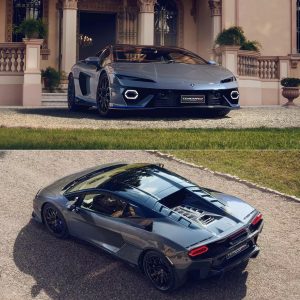This Blown Wing Marvel is Literally a Plane That Floats on Air
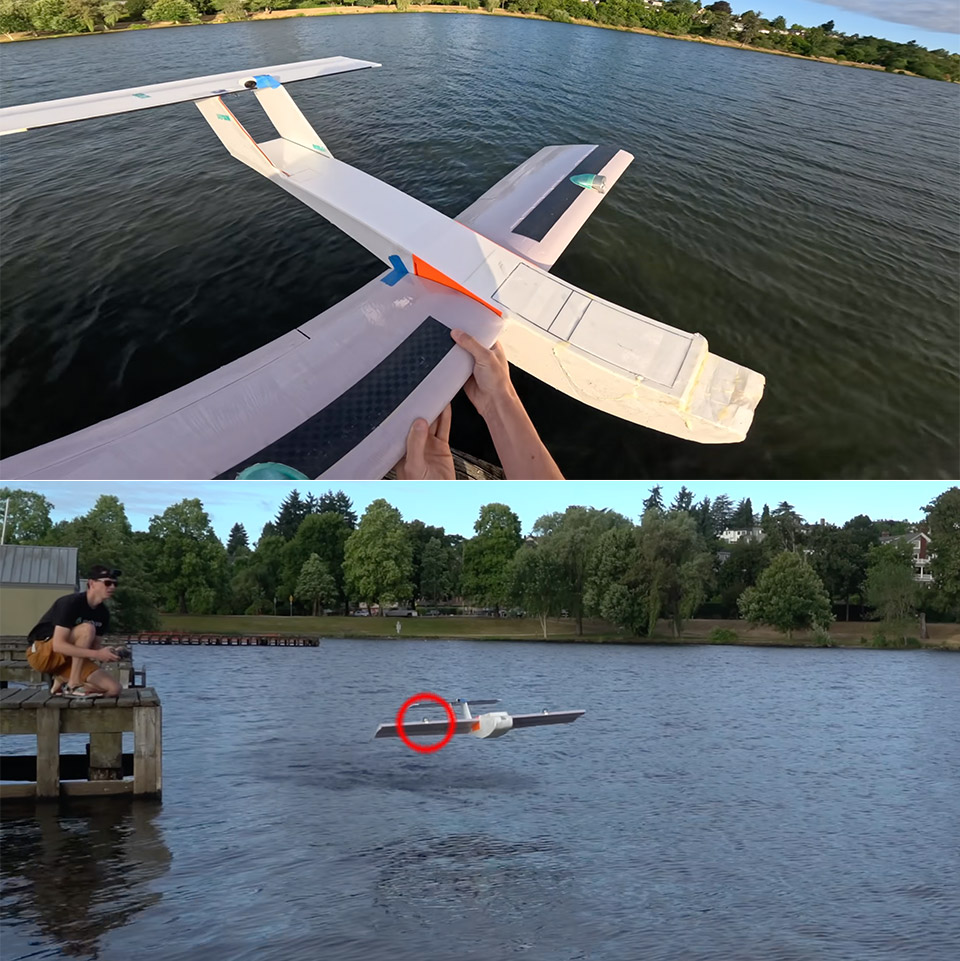

Daniel Riley, the genius behind the YouTube channel rctestflight, loves to build things that break the laws of physics. His latest creation, a remote controlled plane with a blown wing, doesn’t just fly – it hovers, drifts and defies expectations with a design so crazy it’s like a magic trick. This foam board and carbon fiber contraption, powered by electric ducted fans, redefines what a plane can do at low speeds.
Riley’s plane is designed to fly as slow as possible while still flying. Slow flight is the holy grail of Short Takeoff and Landing (STOL) aircraft, allowing them to take off and land in tight spaces. Traditional planes achieve this with flaps or slats that change the shape of the wing to generate more lift at low speeds. Riley does it differently. His plane uses a blown wing, where high pressure air is forced through slits in the wing to keep it flying even when it’s moving so slow it should stall. This isn’t a new idea – jets like the F-104 Starfighter used blown flaps to slow their landings – but Riley takes it to an extreme, making the blown wing the sole source of both lift and propulsion.

DJI Neo, Mini Drone with 4K UHD Camera for Adults, 135g Self Flying Drone that Follows You, Palm Takeoff,…
- Due to platform compatibility issue, the DJI Fly app has been removed from Google Play. DJI Neo must be activated in the DJI Fly App, to ensure a…
- Lightweight and Regulation Friendly – At just 135g, this drone with camera for adults 4K may be even lighter than your phone and does not require FAA…
- Palm Takeoff & Landing, Go Controller-Free [1] – Neo takes off from your hand with just a push of a button. The safe and easy operation of this drone…
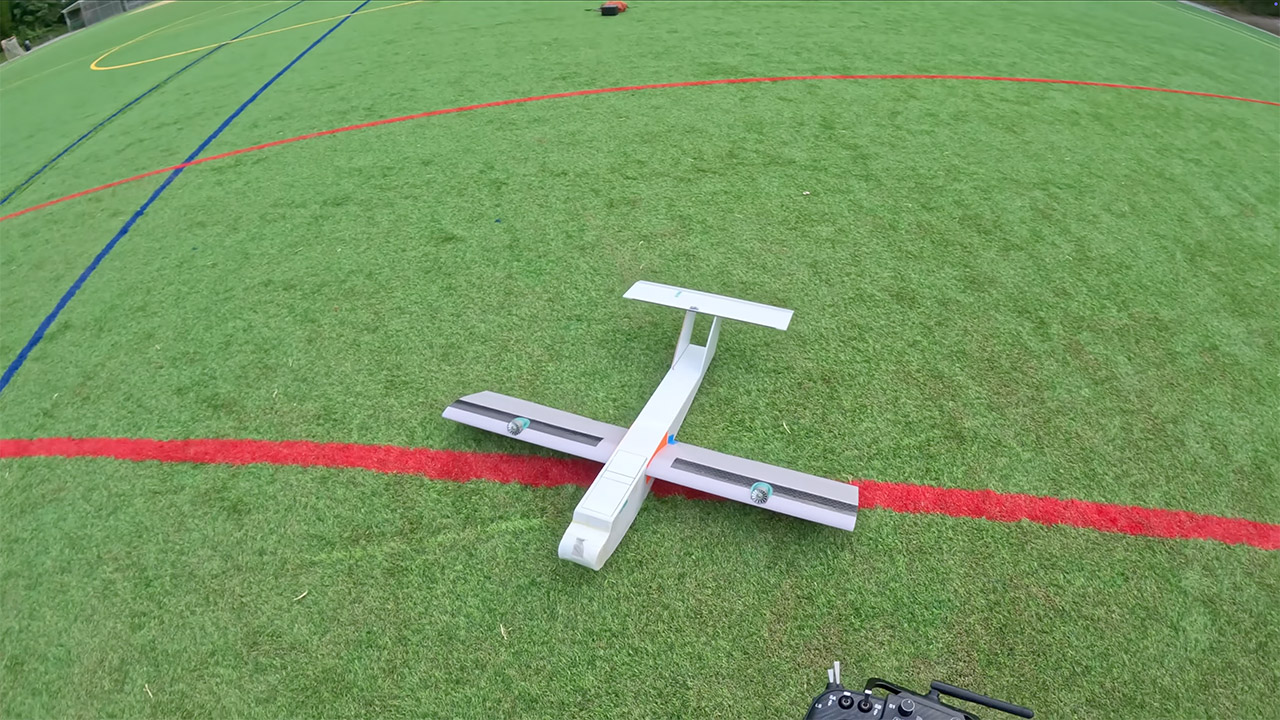
The wings are made from pink XPS insulation foam, machined with a CNC router to create a precise airfoil shape. Inside each wing, a cavity acts as a plenum, channeling air from a 50mm electric ducted fan (EDF) to a narrow slit along the top surface of the wing. A carbon fiber plate, molded with epoxy and vacuum bagged for strength, covers this slit and directs the airflow rearward. This high speed air clings to the curved surface of the wing due to the Coanda effect, a phenomenon where air follows a curved path, preventing the wing from stalling even at high angles of attack. The result? A plane that can take off in feet and float through the air at speeds so low it seems to hover.Control is where things get crazy. The EDFs, one on each wing, don’t just provide lift – they’re the only source of propulsion.
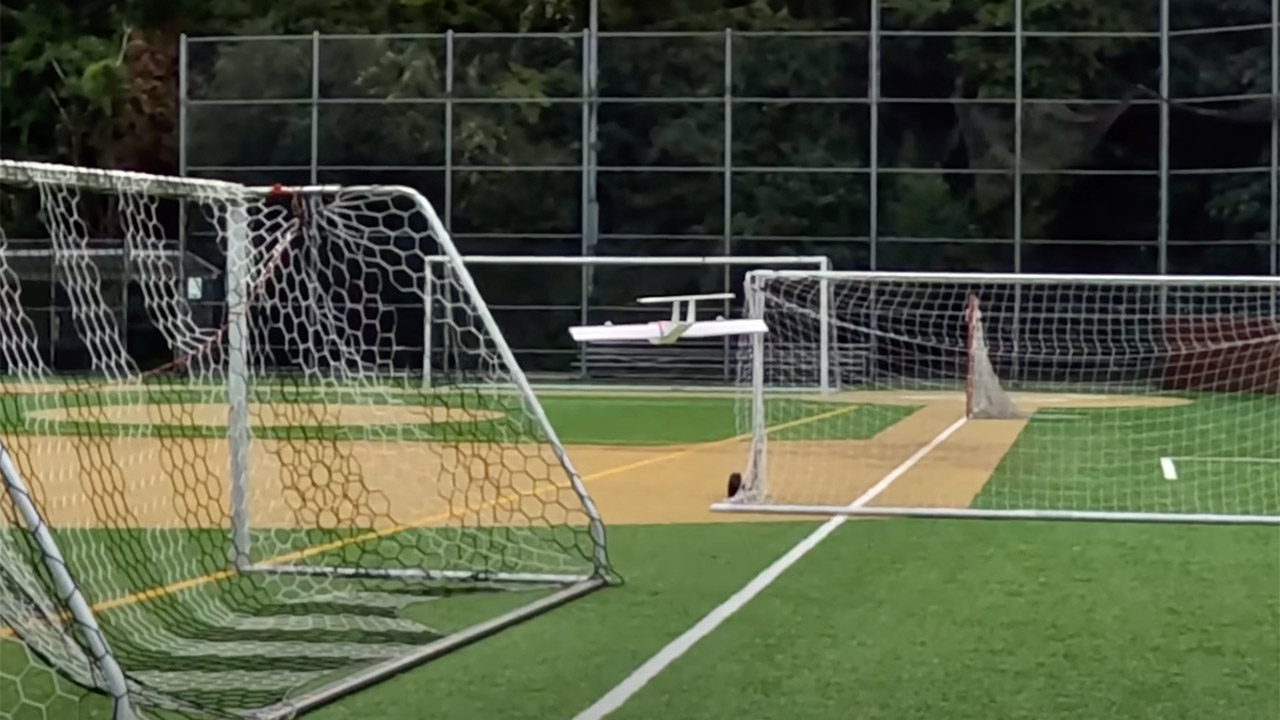
By varying the speed of each fan, Riley can control thrust and lift differentially and yaw and pitch the plane. A wing with more fan power generates more lift and the plane rises and tilts. Initially he was going to rely solely on this differential thrust for control but caution got the better of him and he added ailerons for extra stability. A servo controlled mechanism also adjusts the angle of attack of the wing in flight so Riley can fine tune the plane for maximum slow flight capability. The fuselage is made from lightweight Depron foam and reinforced with packing tape to keep it simple and crash proof and an Ardupilot flight controller with GPS to stabilize and even auto return to home.
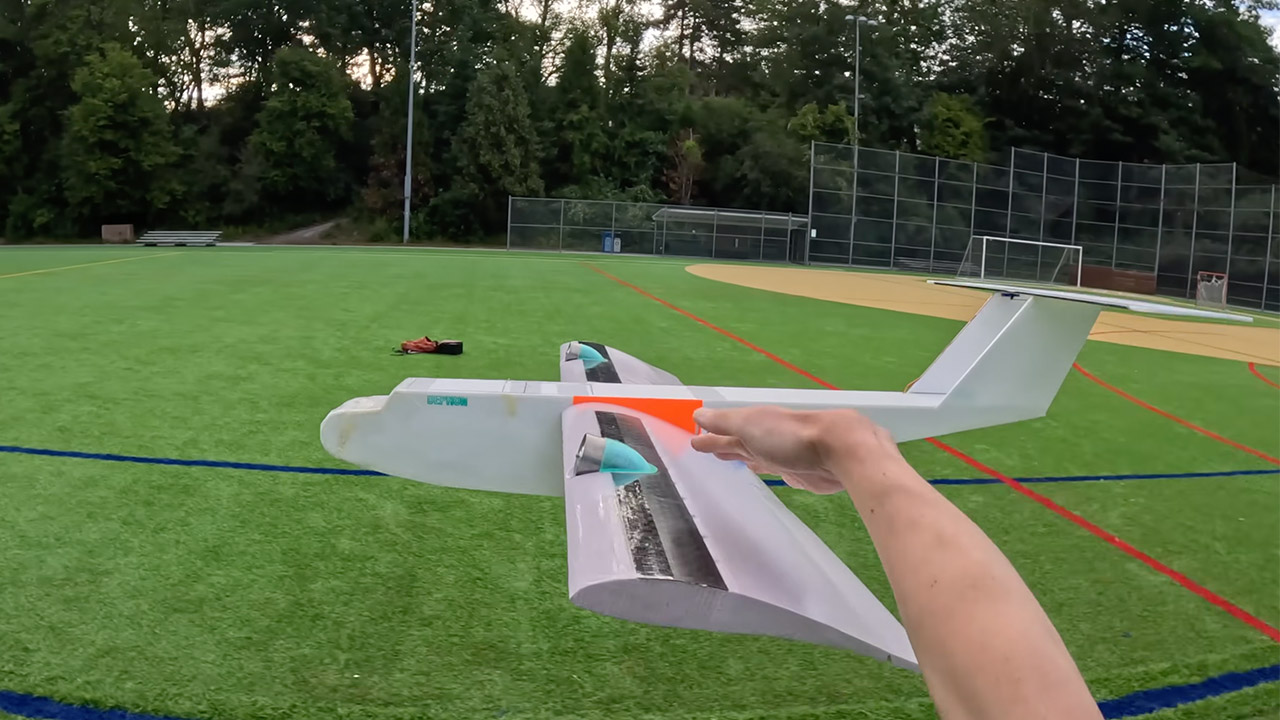
Now the fun begins. Riley takes it to a lake for its first seaplane test. The first test with a 4 cell 1300mAh battery is amazing. It lifts off almost by accident during a taxi test and floats into the air with a grace that belies its foam construction. With a 6 cell battery it’s even better, takes off in seconds even with windy conditions. The blown wing proves itself, it can fly at 29 degrees of angle of attack, 10 degrees more than a standard wing, before stalling. At its steepest angle it can hit 36 degrees without losing lift, Riley confirms with a makeshift wind tunnel using a fog machine and laser. It can “levitate” at low speeds but it comes at a cost.
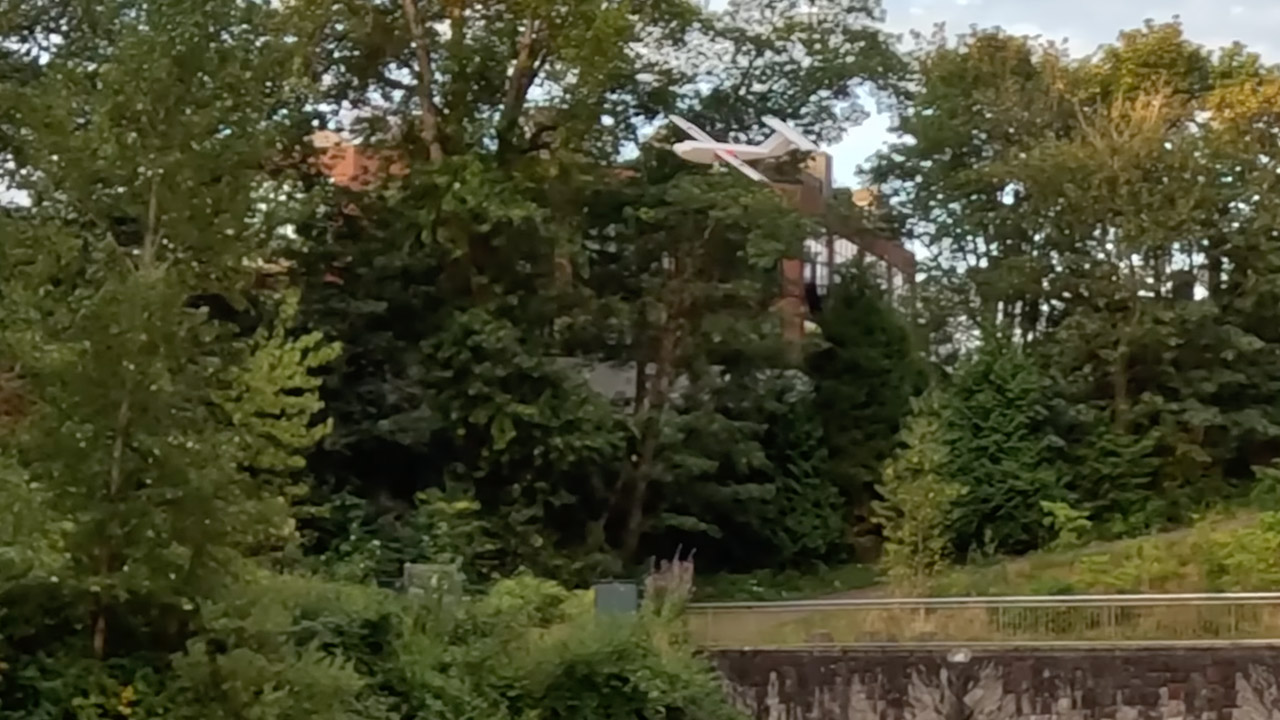
This plane is a power hog. The EDFs are like high end hair dryers and suck down the battery. A 2200mAh 6 cell pack lasts only a few minutes. Riley says it consumes power twice as fast as a 5 inch FPV drone. The metal EDFs were chosen for high static pressure and outperform hobby grade fans when airflow is restricted by the wing ducts but they are still inefficient compared to a traditional propeller. At full throttle it produces about 850 grams of thrust but 29% of that is directed downward to create lift leaving only 71% for forward motion.

So what’s the verdict? Riley’s blown wing plane is a marvel of ingenuity, it proves a wing can generate lift in ways that defy conventional aerodynamics. It can take off in a few feet and float at walking speed, it’s amazing. But it’s inefficient, burning through batteries and risking motor burnout. Riley himself wonders if a traditional wing with EDFs tilted up could achieve similar results with less power.
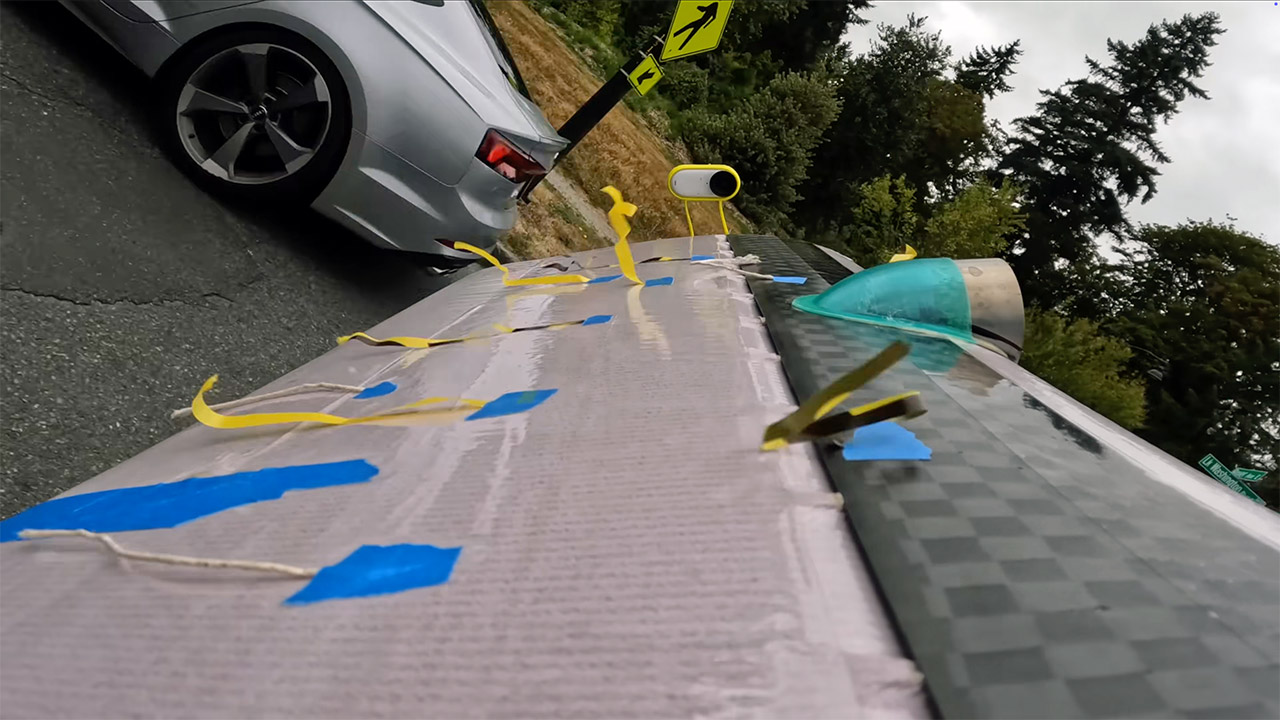
Riley’s not done yet. He’s already thinking about combining a blown wing with a multi element airfoil for even more performance. For those who want to try their own experiments his CAD model is on Onshape and his YouTube channel is full of cool builds from solar powered gliders to hydrofoils. This blown wing plane with all its quirks and triumphs is a perfect example of why we love Riley’s work: it’s not just about flying, it’s about reimagining.
[Source]
This Blown Wing Marvel is Literally a Plane That Floats on Air
#Blown #Wing #Marvel #Literally #Plane #Floats #Air


